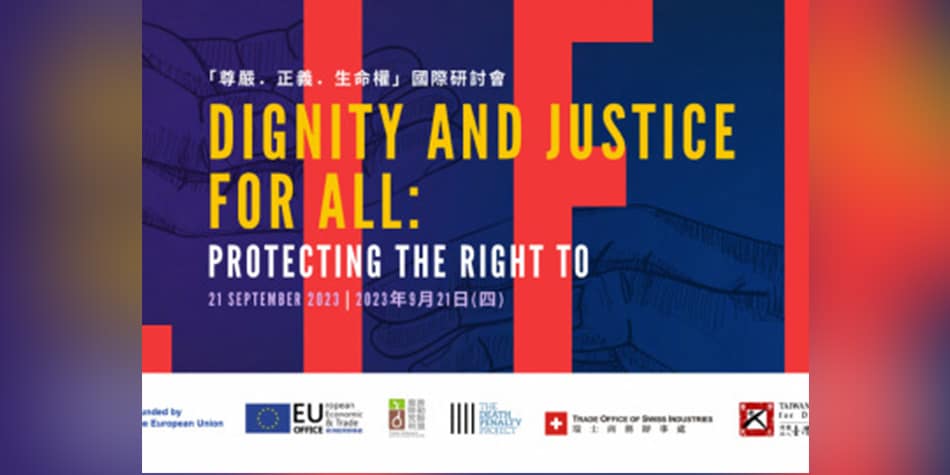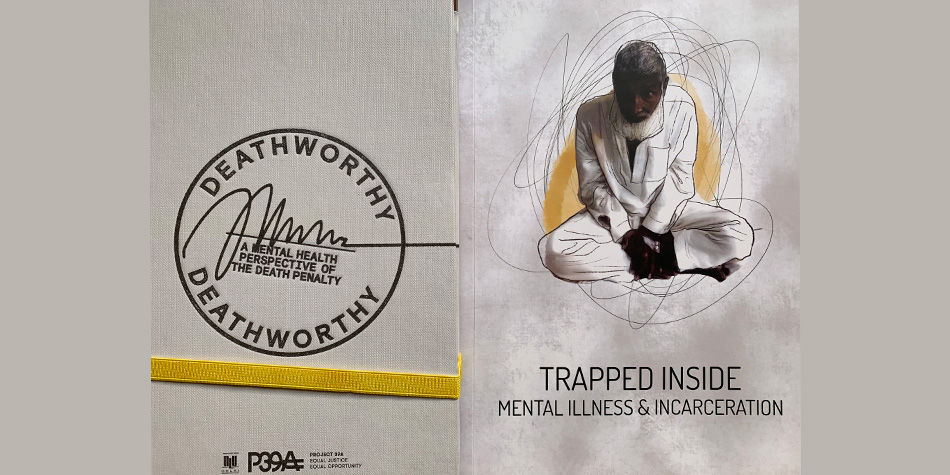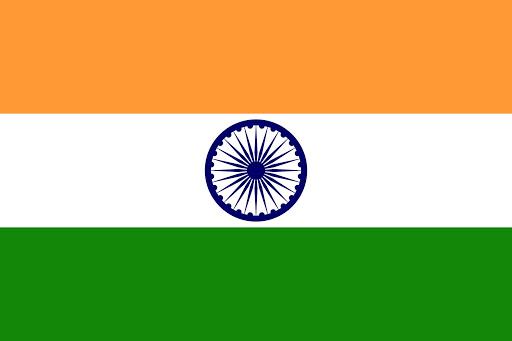| 2015 | Last known execution |
| Hanging, Shooting | Method(s) of execution |
| No | Party to the International Covenant on Civil and Political Rights |
| No | Party to the Second Optional Protocol to the ICCPR, aiming at the abolition of the death penalty |
| Not applicable | Party to the American Convention on Human Rights |
| Not applicable | Party to the Protocol to the American Convention on Human Rights to Abolish the Death Penalty |
| No | UN Moratorium Resolution (2010): cosponsor |
| Against | UN Moratorium Resolution (2010): vote |
| No | UN Moratorium Resolution (2010): has signed the Note Verbale of Dissociation |
| No | UN Moratorium Resolution (2012): cosponsor |
| Against | UN Moratorium Resolution (2012): vote |
| Yes | UN Moratorium Resolution (2012): has signed the Note Verbale of Dissociation |
| No | Does the country have a mandatory death penalty? |
| 2023-05-23 | Last update |
Source: Cornell Center on the Death Penalty Worldwide
*Source of classification: Amnesty International
Related document(s)
Document(s)
Death Penalty in India: Annual Statistics Report 2023
By Project 39A, on 15 February 2024
2024
NGO report
India
More details See the document
Published in 2023.
This is the eighth edition of the Death Penalty in India: Annual Statistics Report. This annual publication presents changes in the death row population as well as political and legal developments in the administration of the death penalty in India each year. The statistics are compiled through a combination of data mining of court websites, media monitoring and Right to Information applications.
- Document type NGO report
- Countries list India
Document(s)
Annual Statistics Report 2022
By Project 39A, on 22 February 2023
2023
NGO report
India
More details See the document
This is the seventh edition of the Death Penalty in India: Annual Statistics Report published by Project 39A at National Law University, Delhi. 2022 represents a significant shift in death penalty adjudication, with the Supreme Court recognising the need to reconsider the capital sentencing framework for the first time since it was laid down in Bachan Singh v. State of Punjab in 1980. In a momentous order, the Supreme Court noted the gaps in the death penalty sentencing framework and has sought to address these concerns through a Constitution Bench towards establishing the components of a real, meaningful and effective capital sentencing hearing. In another decision, the Court laid down guidelines for the collection of mitigating material by trial courts. However, in the same year that the Supreme Court cast grave doubts on the death penalty sentencing framework and its implementation by trial courts, it is of concern that 165 death sentences were imposed by Sessions Courts, the highest in a single year since 2000.
- Document type NGO report
- Countries list India
Document(s)
Death Penalty and the Indian Supreme Court (2007-2021)
By Project 39A, on 8 December 2022
2022
NGO report
India
More details See the document
Death Penalty and the Indian Supreme Court (2007-2021) maps the important trends and developments in the Supreme Court’s death penalty jurisprudence. These past 15 years have witnessed significant developments in the law on capital sentencing, post-mercy jurisprudence, and other procedural developments pertaining to the administration of the death penalty. Imagined as an intellectual successor of PUCL and Amnesty International’s doctrinal study of the Supreme Court’s death penalty cases between 1950 to 2006, in ‘Lethal Lottery: The Death Penalty in India’, this report highlights the sustained inconsistency and judge-centric reasoning in capital cases, with particular emphasis on the problem of arbitrariness in approaches to capital sentencing at the Supreme Court.
- Document type NGO report
- Countries list India
Document(s)
Legislative Expansion and Judicial Confusion: Uncertain Trajectories of the Death Penalty in India
By Anup Surendranath and Maulshree Pathak, on 1 September 2022
2022
Academic report
India
More details See the document
The numbers and the politics of the death penalty in India tell very different stories, presenting complicated narratives for its future. The public reaction to instances of sexual violence and other offences over the last decade and the consequent political response has significantly strengthened the retention and expansion of the death penalty. This is reflected from the fact that that of all the death sentences that district courts impose, only about 5 percent get confirmed in India’s appellate system. However, does this mean there is growing scepticism about the death penalty in the Supreme Court of India? Unfortunately, the answer is far from simple. An assessment of the death penalty in India’s appellate courts during the last decade will demonstrate that a crime-centric approach has hindered any principled discomfort with the death penalty or the manner of its administration. In particular, the Supreme Court has faltered in high-profile death sentence cases (i.e., offences against the state and sexual violence cases), and its track record of commutations has very little to do with principled considerations on sentencing. This paper argues that the political and judicial imagination of the death penalty, as a necessary part of the response to crime, creates significant and unique challenges for the path towards abolition.
This article was first published in Crime Justice Journal: https://www.crimejusticejournal.com/issue/view/119
- Document type Academic report
- Countries list India
Document(s)
A Deadly Distraction, Why the Death Penalty is not the Answer to Rape in South Asia
on 25 May 2022
2022
Arguments against the death penalty
NGO report
Bangladesh
India
Pakistan
Sri Lanka
More details See the document
Since 2010, persons convicted of rape offences were executed in at least 9 countries, including India and Pakistan. Moreover, public protests against the rape epidemic, which led governments to introduce capital rape laws, illustrates the need to shine a spotlight in South Asia.
The report examines the use of the death penalty for rape in four South Asian countries: Bangladesh, India, Pakistan and Sri Lanka and explores ways that anti-death penalty activists can challenge this concerning trend.
- Document type Arguments against the death penalty / NGO report
- Countries list Bangladesh / India / Pakistan / Sri Lanka
Document(s)
Death Penalty in India – Annual Statistics Report 2021
By Project 39A, on 4 February 2022
2022
Academic report
India
More details See the document
Project 39A at the National Law University, Delhi published the sixth edition of the Death Penalty in India: Annual Statistics Report which provides an annual update on the use of the death penalty in India along with legislative and international developments on the issue. As on 31st December 2021, there were 488 prisoners on death row across India (a steep rise of nearly 21% from 2020), with Uttar Pradesh having the highest number at 86. This is the highest the death row population has been since 2004 as per the data from the Prison Statistics published by the National Crime Records Bureau.
- Document type Academic report
- Countries list India
Document(s)
Deathworthy: a mental health perspective of the death penalty
By Project 39A, on 7 October 2021
2021
Academic report
India
Mental Illness
More details See the document
A first of its kind report, Deathworthy, presents empirical data on mental illness and intellectual disability among death row prisoners in India and the psychological consequences of living on death row. The report finds that an overwhelming majority of death row prisoners interviewed (62.2%) had a mental illness and 11% had intellectual disability. The proportion of persons with mental illness and intellectual disability on death row is overwhelmingly higher than the proportion in the community population. The report also establishes correlations between conditions of death row incarceration and mental illness and ill-health. Led and conceptualised by Maitreyi Misra (Head, Mental Health and Criminal Justice, Project 39A, National Law University Delhi), the study was conducted under the guidance of Dr. Pratima Murthy (Director, NIMHANS), Dr Sanjeev Jain (Senior Professor, Deptt of Psychiatry, NIMHANS) and Dr Gitanjali Narayanan (Associate Professor, Deptt of Psychology, NIMHANS).
- Document type Academic report
- Countries list India
- Themes list Mental Illness
Document(s)
Death Penalty India Report – Volume 2
By Anup Surendranath / National Law University, New Delhi Press, on 8 September 2020
2020
NGO report
India
More details See the document
This project sought to answer questions regarding the socio-economic profile of prisoners sentenced to death in India while looking into the process of death sentencing in itself. By means of meaningful statistics and case studies, this report manages to enlighten some aspects of the death penalty in India which are generally not fully explored and triggers a sociological discussion on these thorny issues that goes beyond the legal analysis of Supreme Court judgments.Chapters:6) Experience in custody7) Trial and appeals8) Living on death row9) Seeking mercy10) ImpactLink to Volume 1: http://www.worldcoalition.org/resourcecentre/document/id/1462890615
- Document type NGO report
- Countries list India
- Themes list Discrimination, Country/Regional profiles,
Document(s)
Death Penalty India Report – Volume 1
By Anup Surendranath / National Law University, New Delhi Press, on 8 September 2020
NGO report
India
More details See the document
This project sought to answer questions regarding the socio-economic profile of prisoners sentenced to death in India while looking into the process of death sentencing in itself. By means of meaningful statistics and case studies, this report manages to enlighten some aspects of the death penalty in India which are generally not fully explored and triggers a sociological discussion on these thorny issues that goes beyond the legal analysis of Supreme Court judgments.Chapters:1) Coverage of the project2) Durations on death row3) Nature of crimes4) Socio-economic profile5) Legal assistanceLink to Volume 2: http://www.worldcoalition.org/resourcecentre/document/id/1463669874
- Document type NGO report
- Countries list India
- Themes list Discrimination, Country/Regional profiles,
Document(s)
Supreme Court of India ruling in Shatrughan Chauhan & Anr. Versus Union of India & Ors.
By P. Sathasivam / Supreme Court of India / Ranjan Gogoi / Shiva Kirti Singh, on 8 September 2020
Multimedia content
India
More details See the document
The Court (pictured) ruled in favour of two prisoners who petitioned for a commutation of their death sentences to life imprisonment, claiming “the unconscionably long delay in deciding the mercy petition has caused the onset of chronic psychotic illness”. It acknowledged the “unbearable mental agony after confirmation of death sentence” and added that in some cases “death-row prisoners lost their mental balance on account of prolonged anxiety and suffering experienced on death row”.
- Document type Multimedia content
- Countries list India
- Themes list Mental Illness, International law, Death Row Conditions, Death Row Phenomenon,
Document(s)
Note verbale dated 16 April 2013 from the Permanent Mission of Egypt to the United Nations addressed to the Secretary-General
By United Nations, on 8 September 2020
United Nations report
Afghanistan
Antigua and Barbuda
Bahrain
Bangladesh
Barbados
Botswana
Brunei Darussalam
Chad
China
Democratic People's Republic of Korea
Egypt
Equatorial Guinea
Eritrea
Eswatini
Ethiopia
Grenada
Guyana
India
Iran (Islamic Republic of)
Iraq
Jamaica
Kuwait
Lao People's Democratic Republic
Libya
Malaysia
Mauritania
Moratorium
Myanmar
Nigeria
Oman
Pakistan
Papua New Guinea
Qatar
Saint Kitts and Nevis
Saint Lucia
Saint Vincent and the Grenadines
Saudi Arabia
Singapore
Solomon Islands
Somalia
Sudan
Syrian Arab Republic
Tonga
Trinidad and Tobago
Uganda
United Arab Emirates
Yemen
Zimbabwe
aresfrruzh-hantMore details See the document
The permanent missions to the United Nations in New York listed below have the honour to refer to General Assembly resolution 67/176, entitled “Moratorium on the use of the death penalty”, which was adopted by the Third Committee on 19 November 2012, and subsequently by the General Assembly on 20 December 2012 by a recorded vote. The permanent missions wish to place on record that they are in persistent objection to any attempt to impose a moratorium on the use of the death penalty or its abolition in contravention of existing stipulations under international law, for the following reasons:
- Document type United Nations report
- Countries list Afghanistan / Antigua and Barbuda / Bahrain / Bangladesh / Barbados / Botswana / Brunei Darussalam / Chad / China / Democratic People's Republic of Korea / Egypt / Equatorial Guinea / Eritrea / Eswatini / Ethiopia / Grenada / Guyana / India / Iran (Islamic Republic of) / Iraq / Jamaica / Kuwait / Lao People's Democratic Republic / Libya / Malaysia / Mauritania / Myanmar / Nigeria / Oman / Pakistan / Papua New Guinea / Qatar / Saint Kitts and Nevis / Saint Lucia / Saint Vincent and the Grenadines / Saudi Arabia / Singapore / Solomon Islands / Somalia / Sudan / Syrian Arab Republic / Tonga / Trinidad and Tobago / Uganda / United Arab Emirates / Yemen / Zimbabwe
- Themes list Moratorium
- Available languages مذكرة شفوية مؤرخة 16 نيسان/أبريل 2013 موجهة إلى الأمين العام من البعثة الدائمة لمصر لدى الأمم المتحدةNota verbal de fecha 16 de abril de 2013 dirigida al Secretario General por la Misión Permanente de Egipto ante las Naciones UnidasNote verbale datée du 16 avril 2013, adressée au Secrétaire général par la Mission permanente de l’Égypte auprès de l’Organisation des Nations UniesВербальная нота Постоянного представительства Египта при Организации Объединенных Наций от 16 апреля 2013 года на имя Генерального секретаря2013年4月16日埃及常驻联合国代表团给秘书长的普通照会
Document(s)
Hindi : 17 भारतीयों की अपील पर यूएई करे निष्पक्ष जांच: एमनेस्टी
By BBC, on 8 September 2020
Academic report
India
More details See the document
युक्त अरब अमीरात में एक पाकिस्तानी नागरिक की हत्या के लिए मौत की सज़ा पाने वाले 17 भारतीयों के मामले में मानवाधिकार संस्था एमनेस्टी इंटरनेशन ने यूएई की कड़ी आलोचना की है. एमनेस्टी ने भारतीयों को कथित तौर पर ‘प्रताड़ित किए जाने और ज़बरदस्ती उनसे अपराध मनवाने’ के बारे में यूएई की आलोचना की है.
- Document type Academic report
- Countries list India
- Themes list Networks,
Document(s)
India: Lethal Lottery: The Death Penalty in India – A study of Supreme Court judgments in death penalty cases 1950-2006
By Amnesty International / Bikram Jeet Batra, on 8 September 2020
NGO report
India
More details See the document
The report shows that contrary to the majority Bench’s views and intentions in Bachan Singh, errors and arbitrariness have not been checked by the safeguards in place, and no small role in this has been played by the judges themselveswho have rarely adhered to the requirements laid down in Bachan Singh, making it clear that it is commonly the judge’s subjective discretion that eventually decides the fate of the accused-appellant.
- Document type NGO report
- Countries list India
- Themes list Due Process , Statistics,
Document(s)
Indian Movie on the Death Penalty: Dhananjoy
By Book My Show, on 8 September 2020
Multimedia content
India
More details See the document
The story is based on the conviction Dhananjoy, accused for the gruesome murder of Hetal Parekh, which took place in the year 1990. On the basis of circumstantial evidence and on the basis of the deceased mother’s statement, Dhananjoy Chatterjee- a security guard, was executed and hanged to death on the early hours of 15th August 2004, after serving imprisonment for 14 long years and after having appealed to all levels of court in the country; and finally, to the President of India.
- Document type Multimedia content
- Countries list India
- Themes list Public opinion, Innocence, Death Row Conditions, Discrimination, Death Penalty,
Document(s)
on 1 January 2020
2020
Book
India
More details See the document
In Abolishing the Death Penalty: Why India Should Say No to Capital Punishment, Gopalkrishna Gandhi asks fundamental questions about the death penalty. Is taking another life a just punishment or an act as inhuman as the crime that triggered it? Does having capital punishment in the law books deter crime? His conclusions are unequivocal: Cruel in its operation, ineffectual as deterrence, unequal in its application in an uneven society, liable like any punishment to be in error but incorrigibly so, these grievous flaws that are intrinsic to the death penalty are compounded by yet another—it leaves the need for retribution unrequited and simply makes society more bloodthirsty.Examining capital punishment around the world from the time of Socrates onwards, the author delves into how the penalty was applied in India during the times of Asoka, Sikandar Lodi, Krishnadevaraya, the Peshwas and the British Raj, and how it works today.
- Document type Book
- Countries list India
- Themes list Public debate, Deterrence , Trend Towards Abolition, Right to life, Death Penalty, Country/Regional profiles,
Document(s)
Death Penalty in India: Annual Statistics Report 2020
By Project 39A, on 1 January 2020
Academic report
India
More details See the document
The ‘Death Penalty in India: Annual Statistics’ attempts to create a comprehensive year-by-year documentation of movements in the death row population in India. The publication tracks important political and legal developments in the administration of the death penalty and the criminal justice system in the year 2020.
- Document type Academic report
- Countries list India
Document(s)
Failings of the Supreme Court, Human Sacrifice, Sentencing and the Death Penalty
By Anup Surendranath / Economic and Political Weekly, on 1 January 2020
Article
India
More details See the document
In the judicial discourse on the relationship between human sacrifice and punishment in criminal law, there are glaring errors. Looking closely at the Supreme Court’s judgment in Ishwari Lal Yadav v State of Chhattisgarh, the deviation from the principle of individualised sentencing and the consequences of ignoring evidence on the complex anthropological and psychological dimensions of human sacrifice are reflected upon.
- Document type Article
- Countries list India
- Themes list Hanging,
Document(s)
A BRIEF INTRODUCTION TO THE INDIAN JUDICIAL SYSTEM AND COURT HIERARCHY
By MARY KOZLOVSKI / Asian Law Centre, on 1 January 2019
2019
Multimedia content
India
More details See the document
This paper provides an introduction to the Indian judicial system and court hierarchy, outlining the jurisdiction of constitutional and statutory courts and tribunals and the appointment, tenure and removal of judges. It describes forms of alternative dispute resolution that have emerged in recent decades, partly to combat delays in the court system, and informal dispute resolution bodies that mediate family disputes, such as Sharia courts. The paper concludes by discussing the contentious issues of delay in the court system, public interest litigation, and appointments to the Supreme and High Courts of India.
- Document type Multimedia content
- Countries list India
Document(s)
Abolishing the Death Penalty: Why India Should Say No to Capital Punishment
By Gopalkrishna Gandhi, on 1 January 2016
2016
Book
India
More details See the document
In Abolishing the Death Penalty: Why India Should Say No to Capital Punishment, Gopalkrishna Gandhi asks fundamental questions about the ultimate legal punishment awarded to those accused of major crimes. Is taking another life a just punishment or an act as inhuman as the crime that triggered it? Does having capital punishment in the law books deter crime? His conclusions are unequivocal: Cruel in its operation, ineffectual as deterrence, unequal in its application in an uneven society, liable like any punishment to be in error but incorrigibly so, these grievous flaws that are intrinsic to the death penalty are compounded by yet another—it leaves the need for retribution (cited as its primary ‘good’) unrequited and simply makes society more bloodthirsty.Examining capital punishment around the world from the time of Socrates onwards, the author delves into how the penalty was applied in India during the times of Asoka, Sikandar Lodi, Krishnadevaraya, the Peshwas and the British Raj, and how it works today
- Document type Book
- Countries list India
- Themes list Capital offences, Public debate, Deterrence , Trend Towards Abolition, Right to life, Cruel, Inhuman and Degrading Treatment and Punishment, Death Penalty, Country/Regional profiles,
Document(s)
Views on the death penalty among college students in India
By Eric G. Lambert / Sudershan Pasupuleti / Punishment and Society / Shanhe Jiang / K. Jaishankar / Jagadis V. Bhimarasetty, on 1 January 2008
2008
Article
India
More details See the document
While research abounds on attitudes toward capital punishment in the United States, such work has been lacking in non-western nations — particularly in India, the world’s largest democracy. Data recently collected have revealed variance in levels of support for the death penalty among Indian college students: 44 percent express some degree of opposition, 13 percent are uncertain, and 43 percent express some degree of support. Reasons for support or opposition also exhibited variance. According to a multivariate analysis, statistically significant reasons for support included retribution, instrumentalist goals, and incapacitation; while significant reasons for opposition included morality and the belief that deterrence could be achieved by imposing sentences of life without parole.
- Document type Article
- Countries list India
- Themes list Public opinion, Public debate,








